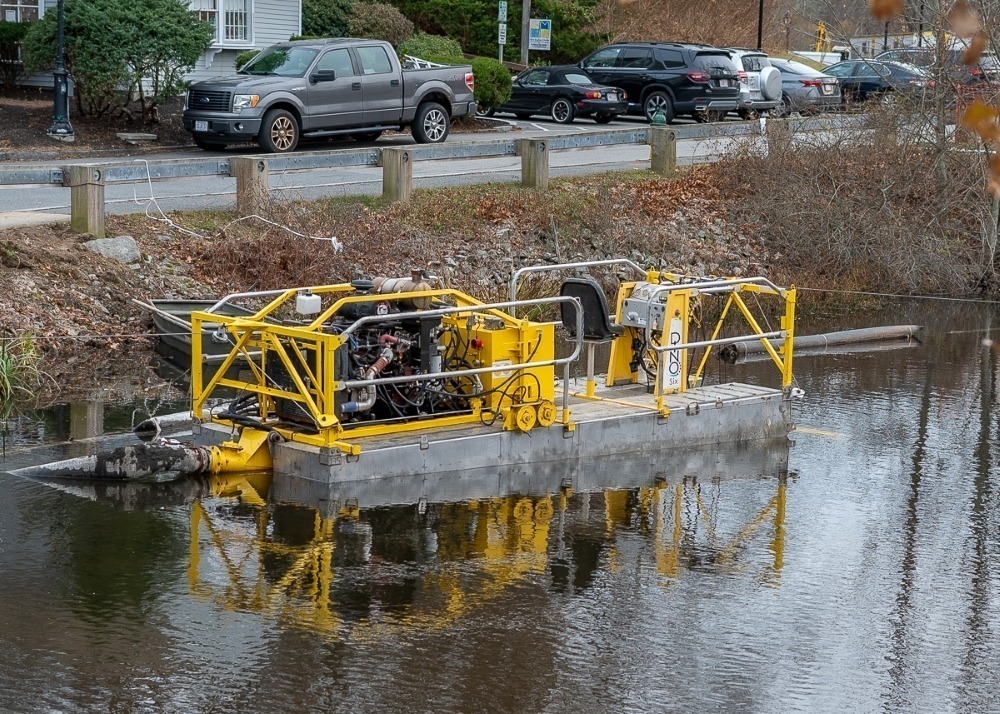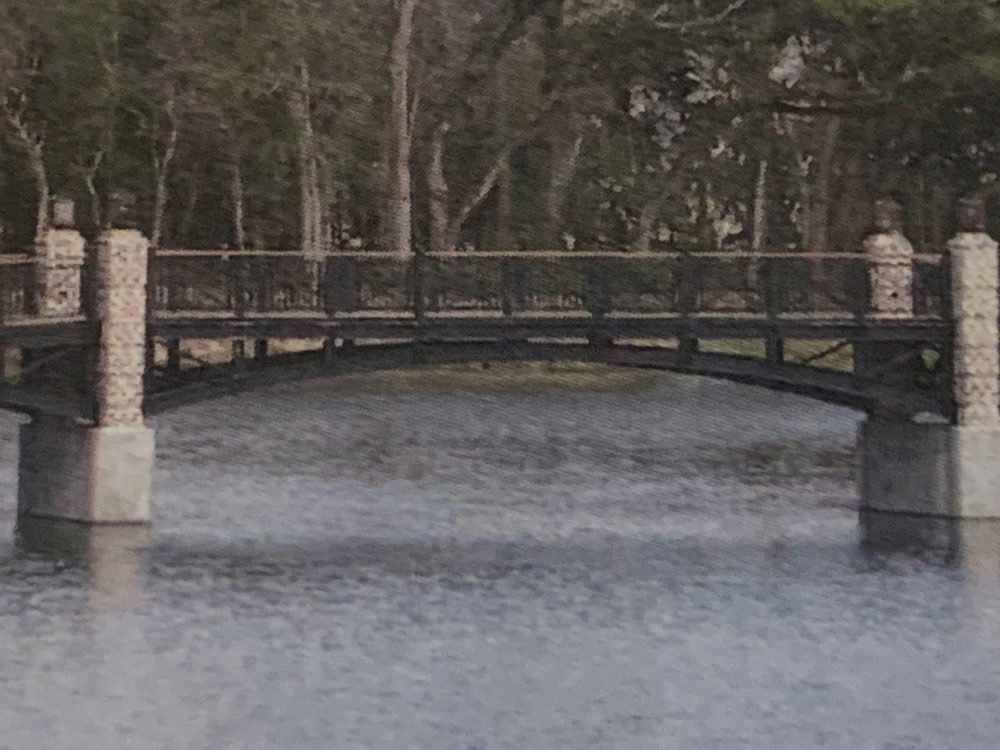Dredging of Jenney Pond is underway, the first step in the construction of a fishway bypass around Plimoth Grist Mill.
The $2.1 million initial part of the project is using $1.1 million of a $10 million grant from the National Oceanic and Atmospheric Administration and another $1 million in Community Preservation funds signed off on by Town Meeting. It is the first phase of a much larger two-year $21 million project that will also include making extensive improvements to Brewster Gardens, said David Gould, director of the town’s Department of Energy and Environment.
The project dates to 2016, with the use of Environmental Affairs funds to conduct a feasibility study and initial engineering on the bypass, and then a state grant of $113,000 to design the dam repairs, Gould said.
The work, which began on Nov. 15, involves a hydraulic dredge moving across the pond, sucking in water and sediment from the brackish pond. The water is pumped into pipes and mixed with a polymer that helps to coagulate and bind sediment.
“The binding of the sediment is crucial because what we’re dealing with here in the pond is very fine organic sediment, the breakdown of organic leaves over decades,” said Tanner Dailey, project manager for ACK Marine and General Contracting, the company hired for the project. (Jenney Pond has not been dredged since 1967.)
“If you were to dry it out, the best analogy would be like powdered sugar,” Dailey said. “It doesn’t like to bind. It doesn’t like to separate out.”
It is essential for the sediment to bind so that when the water next goes to rest in geotubes that look like big inflatable plastic tubes (but are made of a porous material) lying on the parking lot and elsewhere around the pond, the sediment can separate out and dry. The water will flow slowly out of the geotubes, leaving the sediment behind, and make its way back to the pond, free of sediment.
“The slope and all the preparation that we’ve done is critical in allowing the sediment to separate out from the water and allow it to slope back,” Dailey said.
The geotubes take up a lot of space, hence the closing of much of the parking lot.
The tubes will be in place until March, at which point they can be opened and the sediment trucked out, Gould said.
“You’ll basically see a rebirth of the activity in the pond and that’d be plant life, the fish, the turtles, the birds, so it ends up creating a much healthier habitat,” Dailey said.
At that point, the site can be restored and a new wheelchair-accessible footbridge put in to replace the old footbridge that has been taken down.
Michael Cahill, natural resources specialist for the Department of Energy and Environment, explained that the next phase – in 2025 – will involve improvements to the Jenney Pond dam, the popular Town Brook trail that runs from the grist mill to Water Street, and the creation of the fish bypass.

The bypass will be paid for with the $9 million remaining from the $10 million NOAA grant. Improvements to the dam would be paid for by the town if Town Meeting approves the $6.7 million expense this spring, Gould said. The footbridge and walkways to it will use $2.1 million in Community Preservation funds appropriated by Town Meeting.
Over time, seven dams were built along Town Brook. By the early 2000s, however, they had outlived their economic usefulness as a source of waterpower. Beginning in 2002, the town, working with the state and federal governments, began removing the dams. The grist mill dam, built in 1636, is the last remaining one along Town Brook. It one of the oldest dams in the country and still powers the grist mill mechanism.

The fishway bypass will circumvent the dam and go behind the mill.
Restoration of Town Brook is part of a plan to address climate change in Plymouth, Cahill said. Even now – during unusually high tides or rainy days – parts of the Brewster Garden path can become impassable.
A 100-year storm would dump about eight inches of rain in 24 hours at the dam site, Cahill noted, which would mean an inch of water would flow over its top unless changes are made. Those kinds of historic storms are projected to get worse, he said, producing 10 inches of rainfall in 24 hours by 2044.
“It’s important that we figure out a way to mitigate the risk associated at this site,” Cahill said at the groundbreaking ceremony.
If the dam overflows, he said, 39 homes and businesses downstream would be flooded.

The fishway bypass would provide three outlets for all that water. It would also allow river herring (both alewives and bluebacks), American eel, sea-run brook trout, rainbow smelt, and maybe American shad to swim up and down the brook – between the fresh water of Billington Sea and the salt water of the ocean.
The trail will be wheelchair accessible all the way from Jenney Pond to the Brewster Gardens entrance at Water Street.
Once the project is completed, the natural flow of Town Brook from Billington Sea to the ocean will be restored for the first time since 1636.
The Jenney Pond and grist mill portion of the project is to be completed by next summer.
Fred Thys can be reached at fred@plymouthindependent.org.

